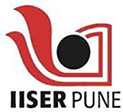Motor-driven machines
Biological process involving nucleic acid transactions employ enzymes driven by motors energized by the hydrolysis of nucleoside triphosphate (NTP). Many of these enzymes, often referred to as protein machines, have modular functional domains that act in concert to carry out a specific task. Aberrations in the coordination can be deleterious to the cell.
My group is interested in understanding the molecular mechanism of how these complex enzymes coordinate their action and function. We employ the tools of structural biology, biochemistry and biophysics to dissect out the mechanism of action. One of the model systems that we study is the NTP-dependent restriction-modification (RM) enzyme, a major bacterial defense system against invading foreign DNA, such as bacteriophage DNA.
These enzymes coordinate the activities of four functional domains – nuclease, helicase-like NTPase motor, methyltransferase and target recognition domain (TRD). TRD facilitates binding to a target sequence. The NTPase-motor translocates DNA. Endonucleolytic cleavage of the DNA occurs when two such translocating enzymes physically collide with one another. The methyltransferase methylates the host genomic DNA to protect it from the nuclease. We recently determined the first crystal structure of such an enzyme, the Type ISP RM enzyme. The structure revealed the molecular details of target recognition, methylation, and provided insights into translocation-coupled nucleolytic activity. Biochemical and single-molecule biophysical studies carried out based on the structure revealed a new mechanism of double-strand DNA-break formation resulting from multiple nicks of the DNA strands.
Recent Publications (click  for more) for more)
Kulkarni, M., Nirwan, N., van Aelst, K., Szczelkun, M. & Saikrishnan, K. (2016). Structural insights into DNA sequence recognition by Type ISP restriction-modification enzymes. Nucleic Acids Res. pii:gkw154..
van Aelst, K., Saikrishnan, K.*, & Szczelkun, M. (2015). Mapping DNA cleavage by the Type ISP restriction-modification enzymes following long-range communication between DNA sites in different orientations. Nucleic Acids Res. 43, 10430-10443. (*Co-corresponding author).
Chand, M. K., Nirwan, N., Diffin, F., van Aelst, K., Kulkarni, M., Pernstich, C., Szczelkun, M. & Saikrishnan, K. (2015). Translocation-coupled DNA cleavage by the Type ISP restriction-modification enzymes. Nature Chemical Biology. 11, 870-877.
|

